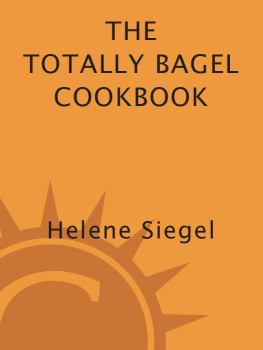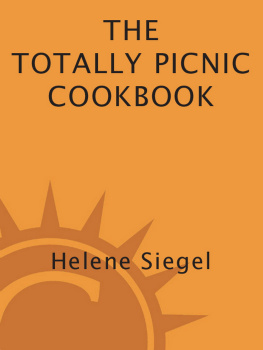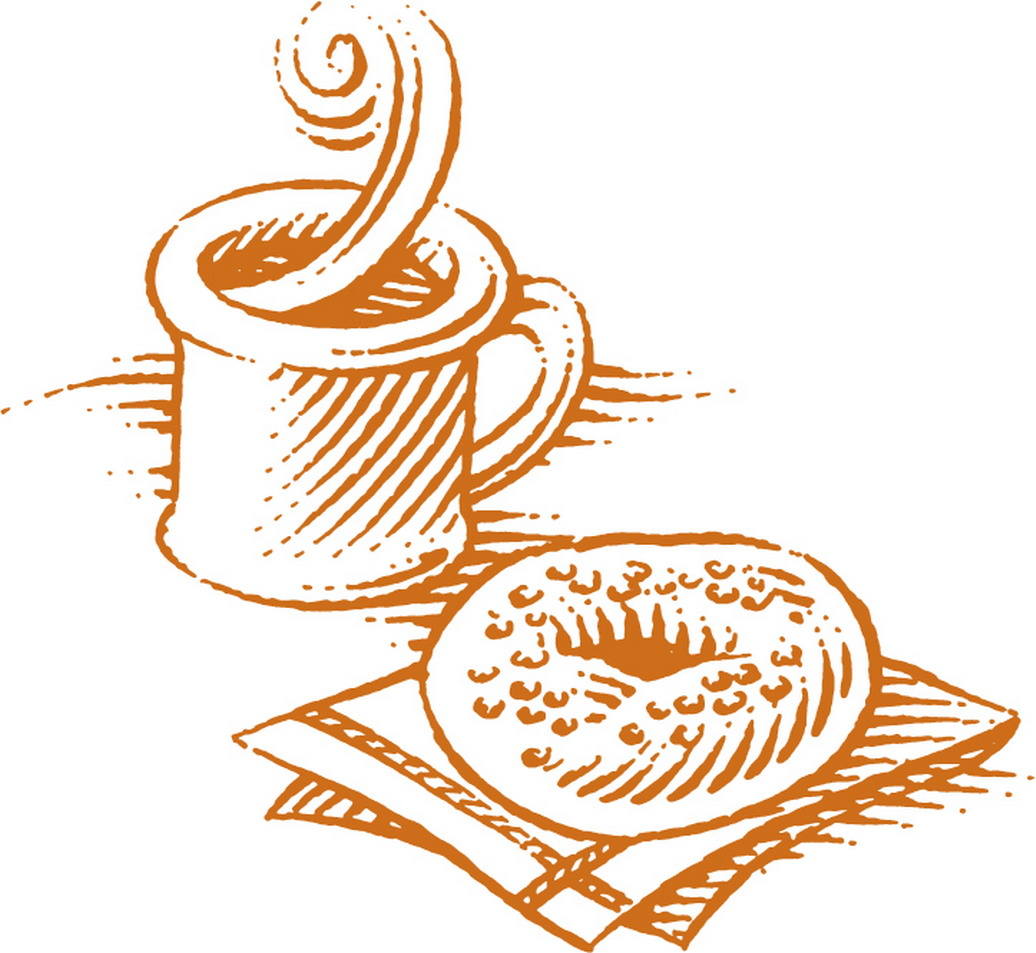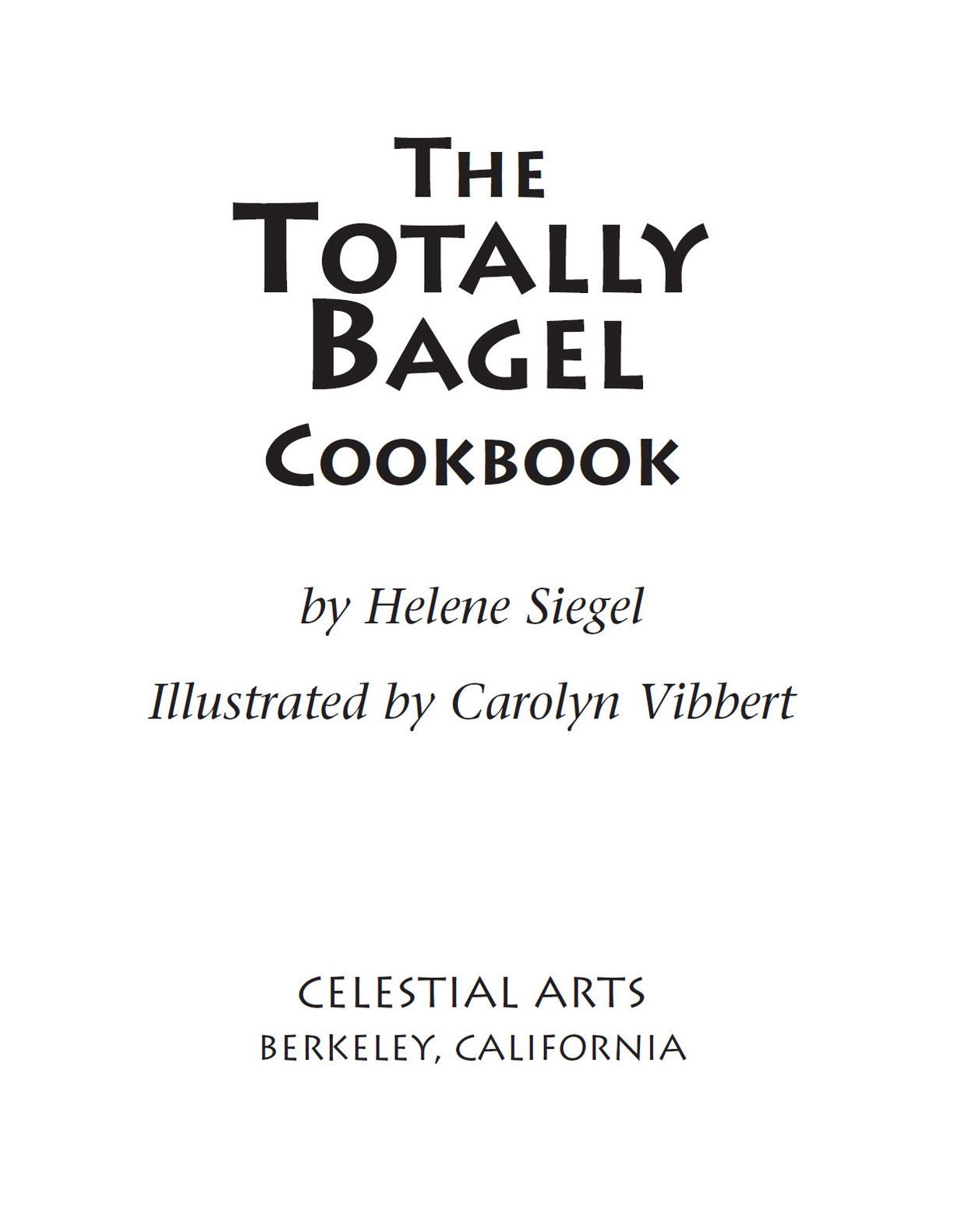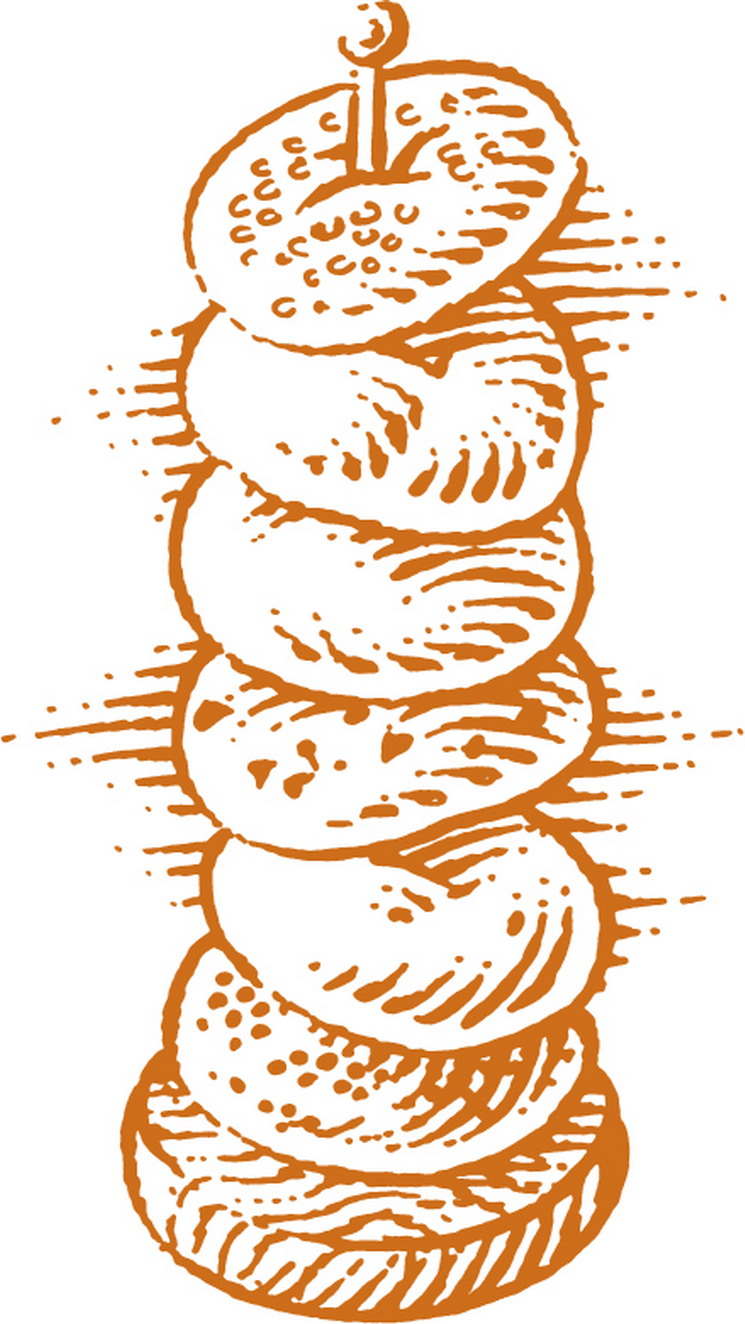Copyright 1997 by Helene Siegel.
Illustrations copyright 1997 by Carolyn Vibbert.
All rights reserved. No part of this book may be reproduced or transmitted in any form or by any means, electronic or mechanical, including photocopying, recording, or by any information storage and retrieval system without permission in writing.
Siegel, Helene.
p. cm.
1. Bagels 2. Cookery (Bagels) I. Title.
P.O. Box 7123
HIS BAGEL RECIPE AND HIS WISDOM .
INTRODUCTION
G iven the bagels intrinsic characteristics, whats not to like?
Bagels are chewy, inexpensive, and round. They are delicious for munching plain like a pretzel, for eating slathered with butter, cream cheese, or your favorite spreador for a trip to nirvanawith cream cheese and lox.
Bagels appeal to health-conscious eaters for their low-fat, high-carbohydrate profile, and they appeal to mere pleasure seekers because they are deliciously satisfying. In addition, bagels make excellent, easy-to-hold teething rings, thanks to that hole in the center.
This is an auspicious moment in the history of the bagel. After several fits and startsan upswing after the Jewish-Polish migration to New York during the first part of this century, a push from nationally distributed Lenders in the 60sbagels seem to be finally working their way into the American culinary mainstream. Like pizza and tacos, which also started out as immigrant foods in this country, bagels are on that circuitous path of assimilation that takes a beloved foodstuff from one culture and puffs it up, crisps it up, sweetens it, or covers it with sauce, so that eventually it becomes something newsomething beloved by an even larger audience of hungry eaters.
Where the homely bagel will end up is anybodys guess. Will the soft 5-ounce bagel become the norm? Are cinnamon-raisin bagels here to stay? Will tofu ever replace real cream cheese? Will bagels be just another baguettea wonderful ethnic bread but not a daily part of the American diet? Or, even worse, are bagels a culinary fad, destined to oblivion like yesterdays kiwi?
As a dyed-in-the-wool bagel eaterI grew up on them in New Yorkmy hunch is that they are here to stay. A bread of such strong character and dependability, around which you can build a small meal, is just too good a thing to pass up. So here are some good ideasmostly solid, some sillyfor enjoying your bagels while they are still hot.
FRESH BAGELS AND DAY-OLD USES
IZZYS BAGELS
When it comes to making bagels at home, nobody said it would be easy. This authentic recipe comes from retired Los Angeles baker Izzy Cohenwho also helped Nancy Silverton at La Brea Bakery develop her specialty Jewish breads.
As far as Izzy is concerned, if it is worth doing something, it is worth doing it right. And he has seen a lot of wrong bagel recipes in his day. To Izzy, a bagel must be chewy. I am a firm believer that foods that take chewing develop flavor in the chewing.
So read the recipe first and dont finagle any shortcuts. Keep in mind Izzys words: You have only one (OK, maybe two or three) customer to please, and nothing compares with the satisfaction of making something yourselfespecially something as wonderful and densely chewy as these handcrafted gems.
2 cups cool water
3 tablespoons sugar
1 tablespoons salt
2 tablespoons barley malt syrup (available at health food stores)
7 cups bread flour, plus extra if the dough is sticky
1 tablespoons dry milk
1 tablespoons vital wheat gluten
5 teaspoons dry yeast
cornmeal for dusting
In the bowl of a heavy-duty electric mixer with dough hook, place water, sugar, salt, and malt syrup. Mix to combine. In another bowl, mix together flour, dry milk, gluten, and dry yeast. Add to the liquid in the bowl all at once, and knead at low speed until dough clears the sides of the bowl. Continue kneading at low speed, until the dough is smooth, about 5 minutes. (If sticky, sprinkle in a bit more flour.)
Transfer to a board, cover with plastic wrap, and let rise 10 minutes. (Do not be concerned with a few wrinkles in the dough.)
With a dough blade or sharp knife, divide the dough into 16 pieces. On an unfloured board, knead each into a smooth ball. (First flatten with the palm of your hand, and then pull the edges into the center, bearing down and pushing away with the heel of your hand with each quarter-turn.) Cover with a towel, and let rest 5 minutes.
Have ready a cardboard sheet or wooden board, lightly dusted with cornmeal. To make the holes, pick up each ball and press a hole through the dough in the center with an index finger. Then push your other index finger through the opposing side, and pull and stretch the hole by running your fingers around each other, enlarging it to 1 to 2 inches. Place on coated sheets, cover with towel, and let rise 1 hours, until not quite doubled.
Meanwhile bring a large pot of water to a boil. Preheat oven to 425 degrees F, and get ready two sheet pans lined with parchment paper. (If you have baking or pizza tiles, place on the baking rack.)
Being careful not to crowd the pot, drop in three or four bagels at a time. (They should immediately rise to the surface.) Boil about 20 seconds, dunking and turning with a spoon to moisten evenly. Immediately transfer with slotted spoon to large strainer, being careful not to stack, and shake off excess liquid. If adding toppings, dip drained bagels in bowls of seeds or spices. Transfer to lined baking sheet.
Bake 15 to 20 minutes, turning once, until golden and crisp all over. Cool on racks, and store.

